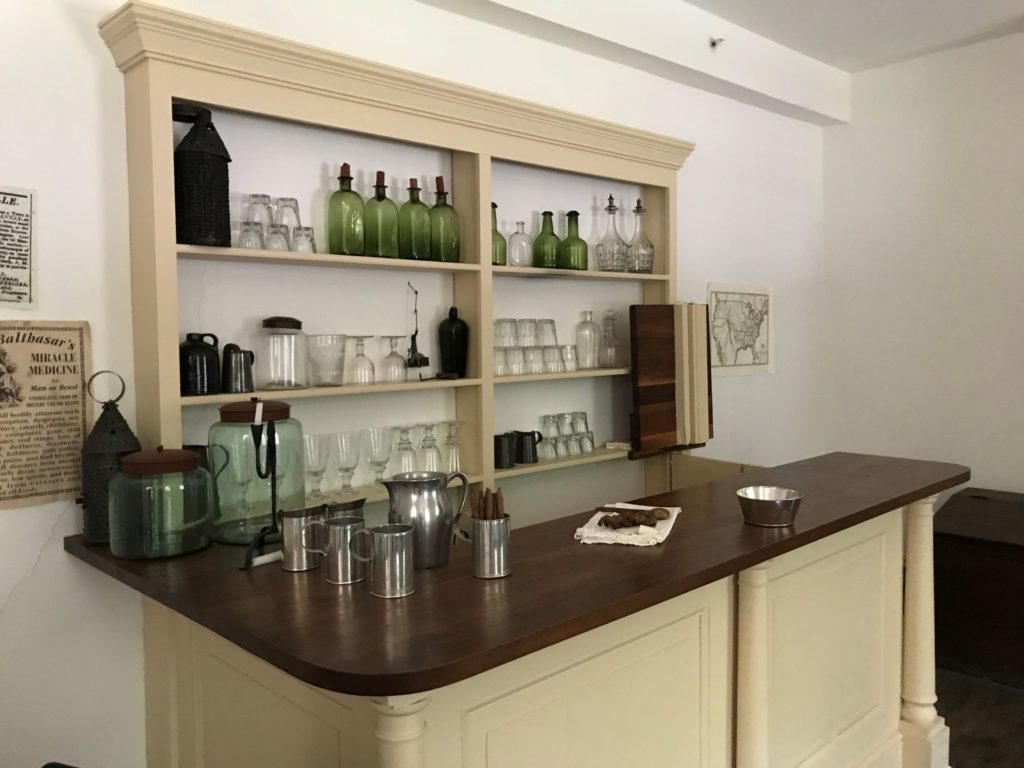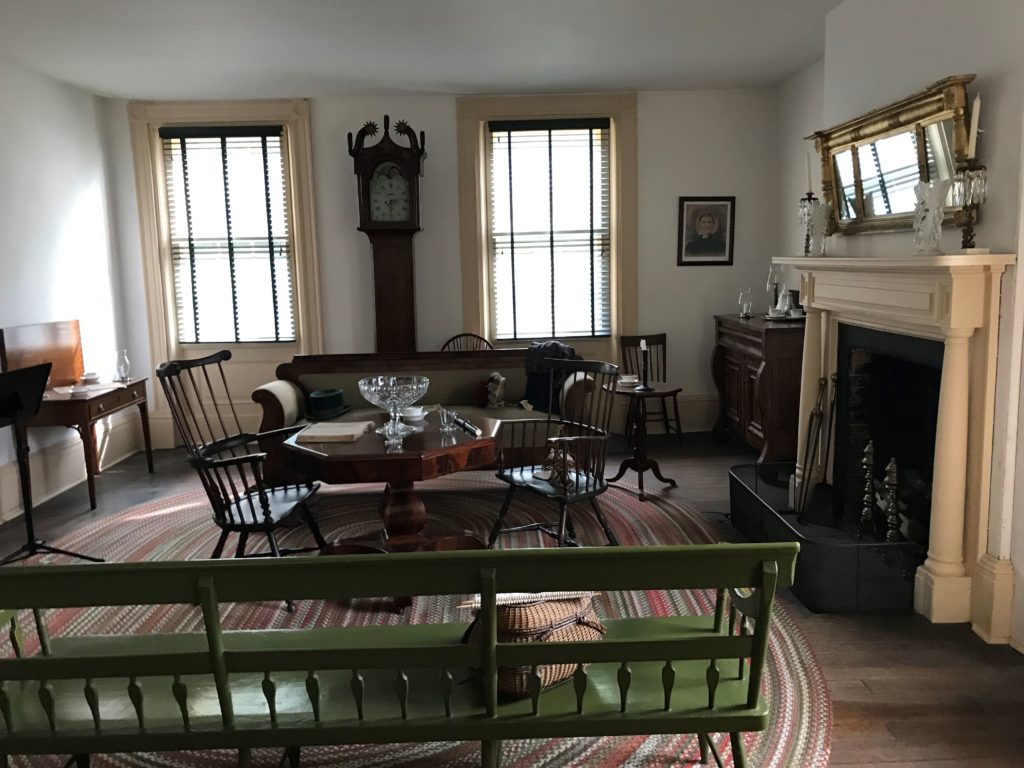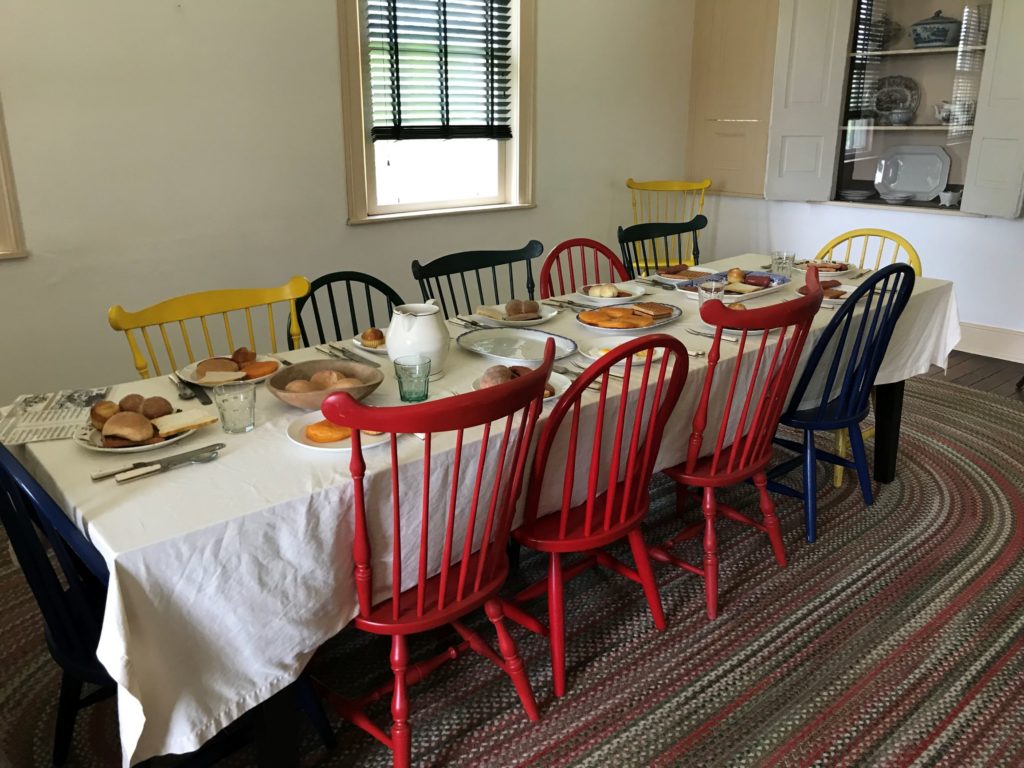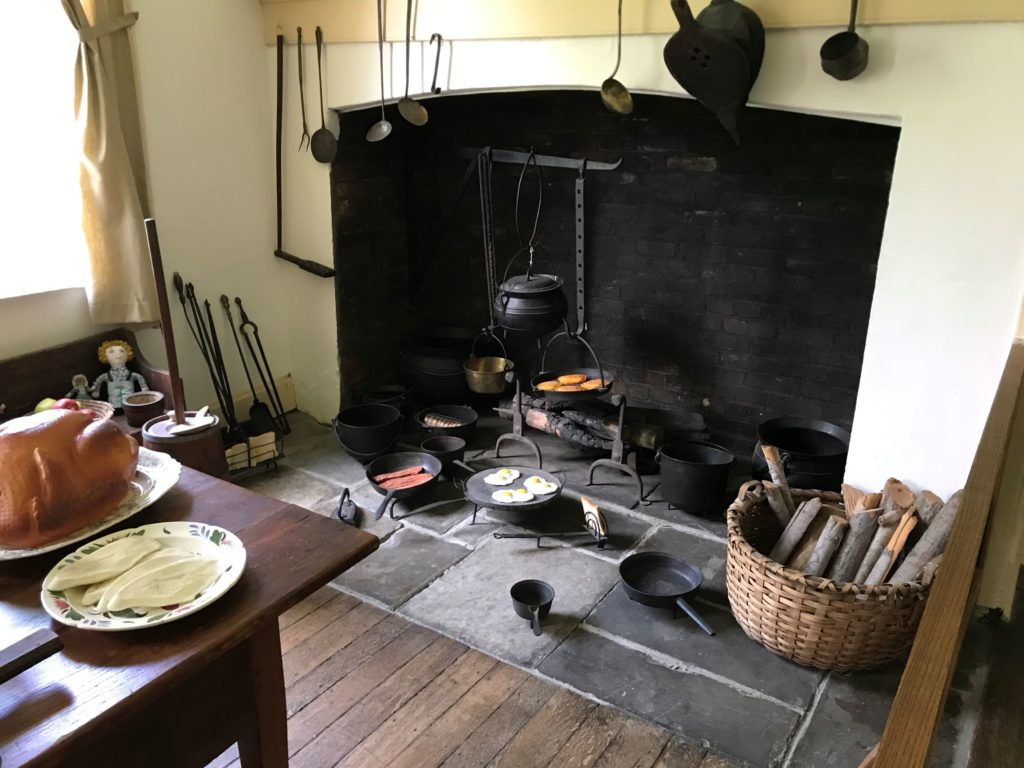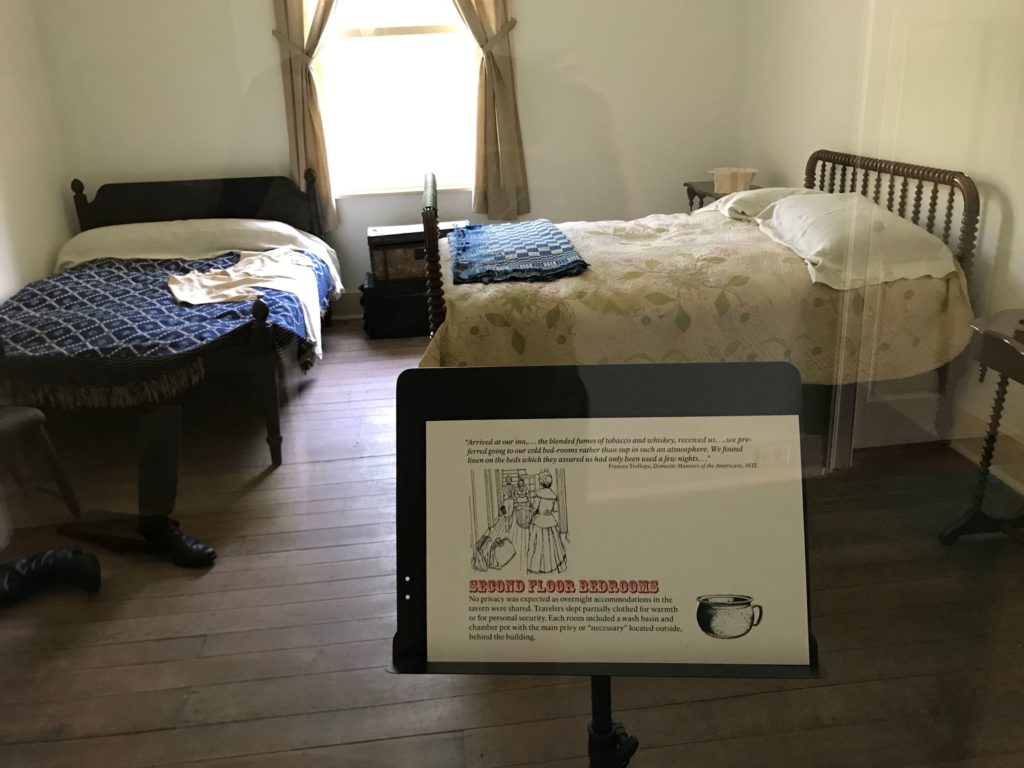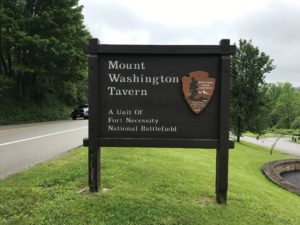 Tom and I work four days a week with three days off. At Fort Necessity we work Friday, Saturday, Sunday, and Monday. On Sunday and Monday I work in the Visitors Center. On Friday and Saturday I get dressed up in a historic outfit and work at Mount Washington Tavern.
Tom and I work four days a week with three days off. At Fort Necessity we work Friday, Saturday, Sunday, and Monday. On Sunday and Monday I work in the Visitors Center. On Friday and Saturday I get dressed up in a historic outfit and work at Mount Washington Tavern.
Last week I wrote about the National Road. I think I neglected to mention that the National Road goes right by Fort Necessity National Battlefield. Which is why I was writing about it. The Mount Washington Tavern was one of the places of business along the National Road and is now a part of Fort Necessity. You may remember that the battle at Fort Necessity took place July 3, 1754. By the time the National Road and Mount Washington Tavern were built, the fort was a memory.
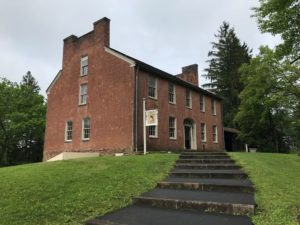
In 1771 George Washington bought the land where the Battle of Fort Necessity took place. He thought it would be excellent farmland and a good place for a public house. He bought the land hoping to sell it later for a profit. This did not occur. When Washington died, in 1799, his estate sold the land in western Pennsylvania. The land was not developed for farming or for a public house until after the National Road was built. In the intervening years, it passed through a dozen owners.
The National Road was finished through Pennsylvania in 1818. In 1830 the land passed to a new owner, who started building a home. Because he lived a distance from this home, he initially rented it out as a tavern and then sold it to the Sampey family who ran it as Mount Washington Tavern. It was run as a tavern until 1855, when the completed railroad between Baltimore and Wheeling caused traffic to die down along the National Road. The tavern wasn’t profitable anymore and the Sampey family sold it to the Fazenbaker family who lived in it as a private home for 80 years.
Mount Washington Tavern was a stagecoach stop and was affiliated with the Good Intent Stagecoach line. The tavern was one of the nicest along the road. Today the tavern is restored to look as it might have in the 1830’s and 1840’s. On the days I work at Mount Washington Tavern I give the guests a little historic overview and answer questions as they wander around.
There are four rooms on the main floor of Mount Washington Tavern: the bar, the parlor, the dining room, and the kitchen. Men would go into the bar for a glass of whiskey, a game of cards, and some conversation. The women went into the parlor for tea and needlework. All the stagecoach passengers, and others traveling along the road, ate in the dining room. Meals were served family style and you didn’t have a choice of the menu. The kitchen is a beautiful, deep-hearth, restaurant-style kitchen.
Upstairs are seven bedrooms, with four of them set up like they would have been during the tavern days. A bed wasn’t full until four people were in it, so a large room with four beds could seem very crowded. People who rode the stage didn’t get the amount of privacy you see in the western movies! At least you didn’t have to worry about being cold in bed.
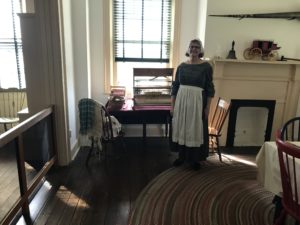
I enjoy spending time in the Mount Washington Tavern. People really like having a person to talk to and ask questions. On the days that I am not there, the tavern is open for self-guided tours. But you can’t walk in any of the rooms. When I am there, you can walk into the bar, dining room, and kitchen.
The Mount Washington Tavern is typical of a stagecoach stop in the eastern United States. I am proud to be a part of preserving this story in the National Park Service.

